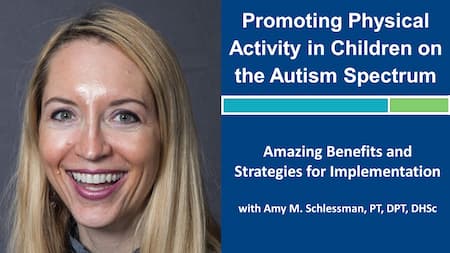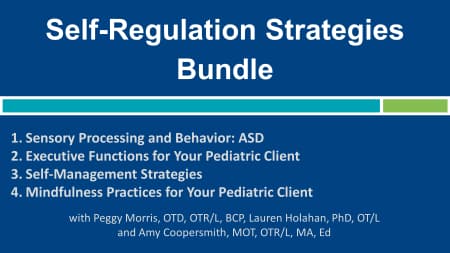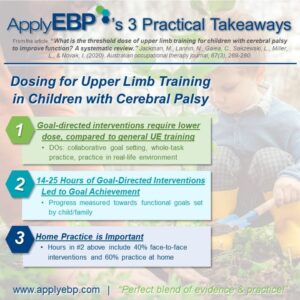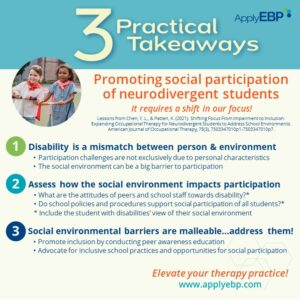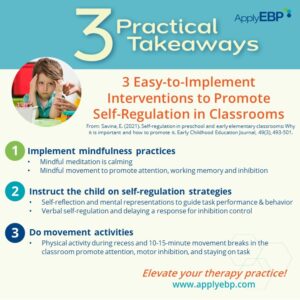3 Practical Takeaways
Use exercise to impact school readiness of students on the autism spectrum
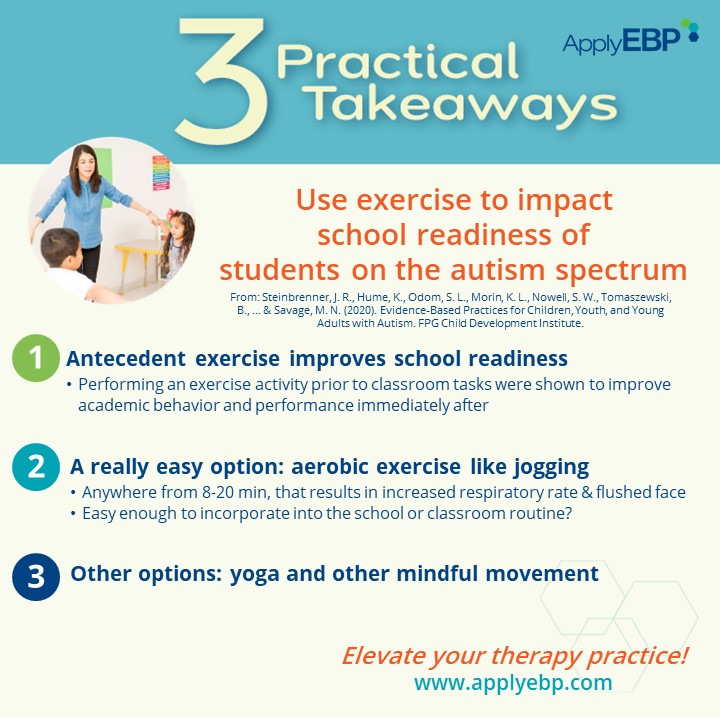
Our main takeaway this week is simple: Use exercise to impact school readiness of students on the autism spectrum.
We have been wanting to feature the work of Steinbrenner et al (2020) since the time it came out. But with so many takeaways, it was hard to choose one to focus on. A course we held last week on 4 Childhood Health Conditions inspired me to focus on Exercise. Questions were asked about interventions for improving academic behaviors. Apply EBP Instructor, Lauren Holahan, PhD, OT/L, stated she likes starting with a strategy that is neither costly nor resource-extensive. Exercise is one such strategy! When done as an antecent (i.e., prior to a school/classroom task), exercise has been shown to improve academic performance and behaviors.
With so many benefits, it’s great to know that even the simplest exercise, such as jogging, can ready students for school tasks. How much jogging? Different studies used varying lengths from 8-20 minutes. What may be most important is the intensity; Oriel et al (2011) reports looking for signs such as increased respiratory rate and flushed face. Alternatively, you can try mindful movements, such as yoga. Can you work with school administrators and teachers to incorporate exercise into the school routine?
Do read the work of Steinbrenner et al (2020) for other interventions that work for children and youth on the autism spectrum, and add your takeaways below.
Click below to download,
print and share the infographics
Continue to Elevate Your Practice with Our...
Featured School
Symposium
Featured Live
Workshop
Featured On-Demand
Webinar
Promoting Physical Activity in Children on the Autism Spectrum
Featured Webinar
Bundle

